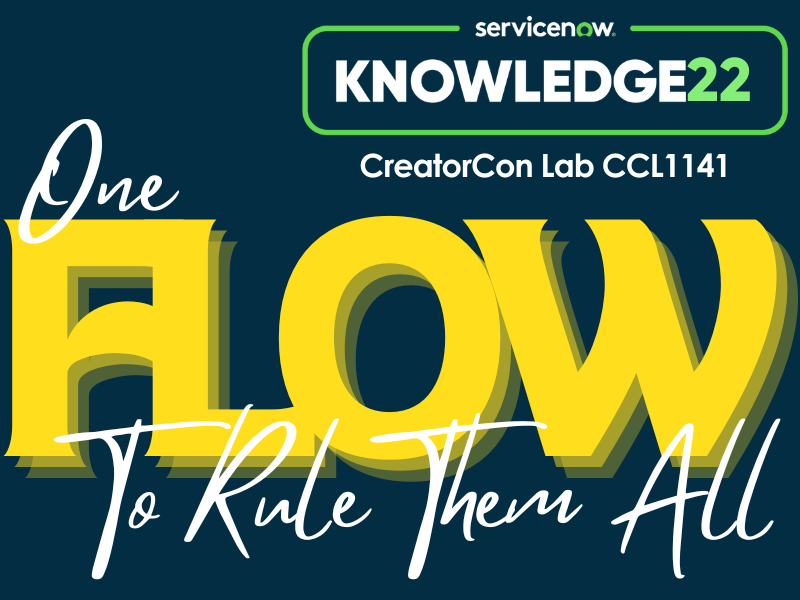A colleague recently asked a slack group of ServiceNow professionals what we thought about ChatGPT and AI. She had noticed “advocacy for using ChatGPT in consulting to speed up deliverable development.” As a Business Process Consultant, those deliverables constitute a significant component of her work product. Understandably, her gut reaction was “one of rejection and resentment (as in NO WE DO NOT DO THAT).” She felt like the work she had put into her career and livelihood were in jeopardy.
I have been playing around with ChatGPT lately and don’t think of it as a threat. In my opinion, ChatGPT is a powerful tool that can help streamline many tasks and processes. More than one person in our slack thread warned that those who reject ChatGPT/AI wholly will get left behind.
Do you remember when ServiceNow first released Flow Designer? Touted as the replacement for Graphical Workflow, it was not met with unbridled adoration. Flow Designer’s automation features were clunky, counterintuitive, and only able to do a fraction of what Workflow could do. I tried it and soon abandoned it because it couldn’t do everything I wanted. Fast forward several ServiceNow releases later; it was starting to make its way into the product as part of baseline features. It became clear that Flow Designer wouldn’t go away just because I didn’t like it. I felt like I was behind the curve, trying to catch up. Opinions vary on whether Flow Designer has reached parity with Graphical Workflow, but I had not done myself or my clients a service by avoiding it up to that point. I put my ego aside, and I figured out how to work with Flow Designer and in what contexts it works best.
ChatGPT, like Flow Designer, provides a way to automate specific tasks and reduce the need for manual effort. However, it is essential to note that ChatGPT is not a replacement for human expertise, especially in its current state.
ChatGPT can rewrite code snippets with goals like using fewer lines or executing more efficiently. However, we know that ServiceNow coding specifics are not always accurately reflected in the output, so it is still necessary for a developer to test the code in context and double-check the results before shipping it off to production.
Another popular way to use ChatGPT is to ask it to write text, such as a blog, article, or email. I have even requested ChatGPT rewrite my original text to be more friendly or less verbose. The output is not perfect, but it provides suggestions beyond Microsoft Word spelling/grammar and Grammarly. The resulting ChatGPT text can serve as a starting point and inspire the final piece, but I still proofread and add my spin before using it anywhere.
Recently, CNET received much backlash after it was revealed that the site had been quietly publishing articles using an internally developed AI. CNET responded, sharing what they were doing, what they had learned, and what they would do differently in the future. They aim to use tools like AI to “offer readers the expert advice they need, deliver more personalized content and give writers and editors more time to test, evaluate, research and report in their areas of expertise.”
Every use of ChatGPT I’ve described above is made better by applying human critical thinking to the output. I can’t predict the future, but ChatGPT cannot replace people like my BPC colleague. ChatGPT AI lacks soft skills, deep contextual experience, and the trustworthiness of human interaction, but the model will continue to evolve. I am choosing to participate in that evolution.
I encouraged my colleague to consider it a new tool in her tool belt, play with it, and creatively think about ways to use it for good. Many in the slack thread agreed and chimed in with their uses. We may have assimilated her into the Collective. Resistance is futile. I mean, uh, she is much more open-minded about the concept.
Footnote:
This blog leaked out into the wild before I had a chance to make one last edit. For total transparency, I did use ChatGPT to assist with writing this blog. I took my lengthy response from our group’s slack thread and asked ChatGPT to “write a blog based on this text: [inserted text here]”. The output was a rough draft that gave me a decent outline, some refactored sentences, and a bunch of fluff. I still spent time proofreading, editing the content to use my voice, and adding additional information. I still had to do all the things I would normally do to write a blog, but they took less time (for me) using ChatGPT. At what point do you think ChatGPT deserves a byline in my content? Let’s continue that discussion on LinkedIn: https://www.linkedin.com/posts/carleencarter_smartcarleen-activity-7026209249223483392–nds












